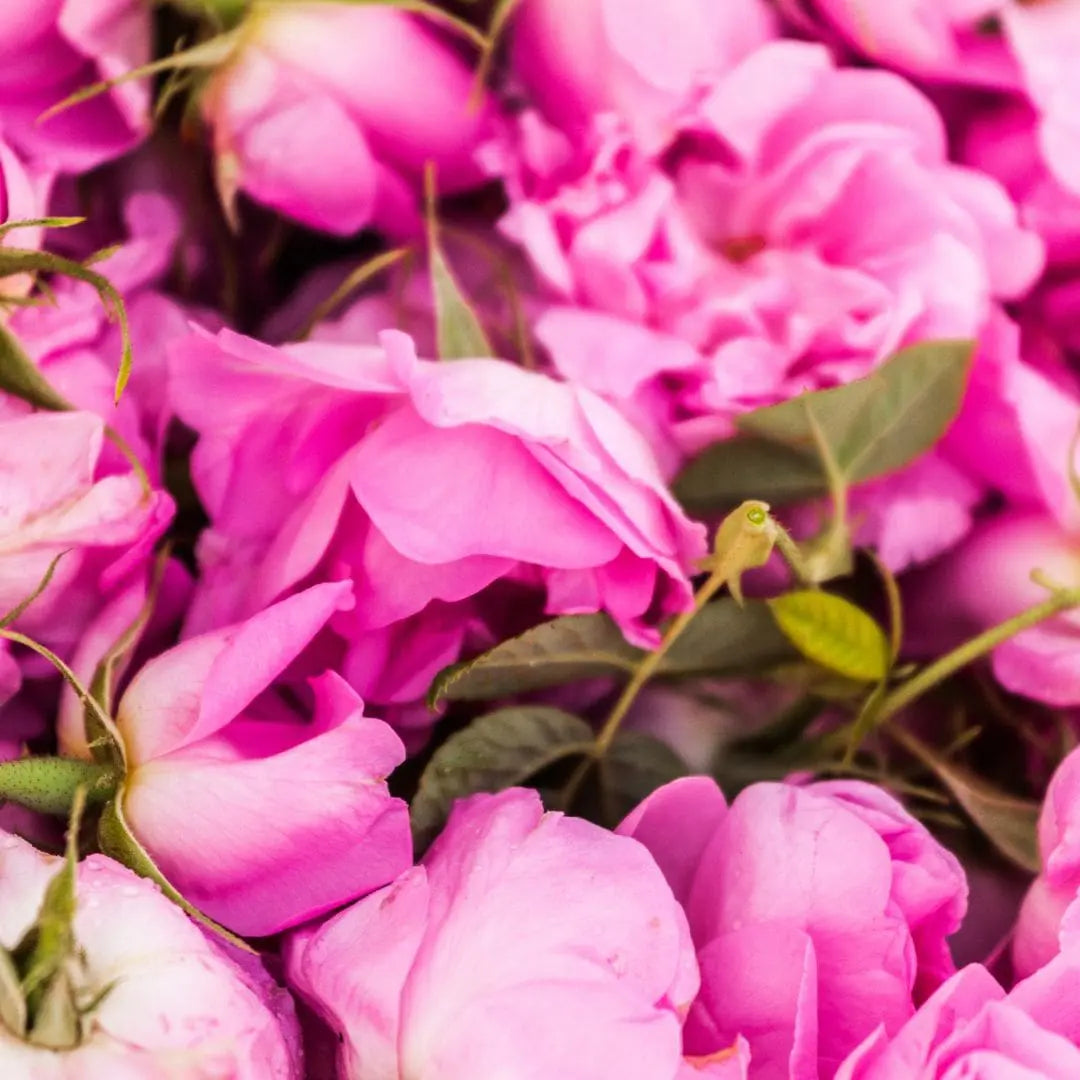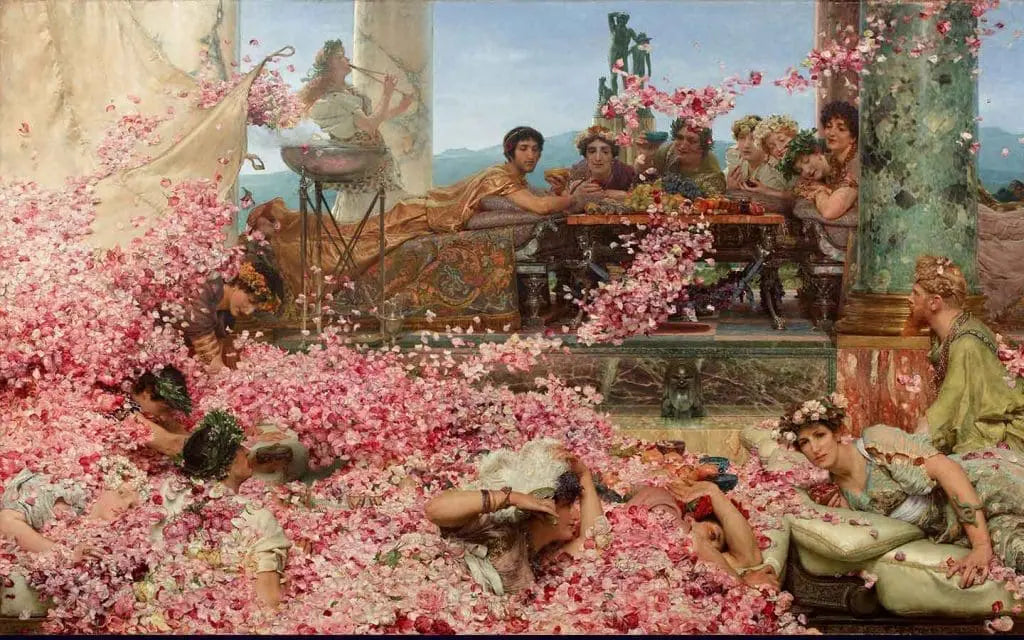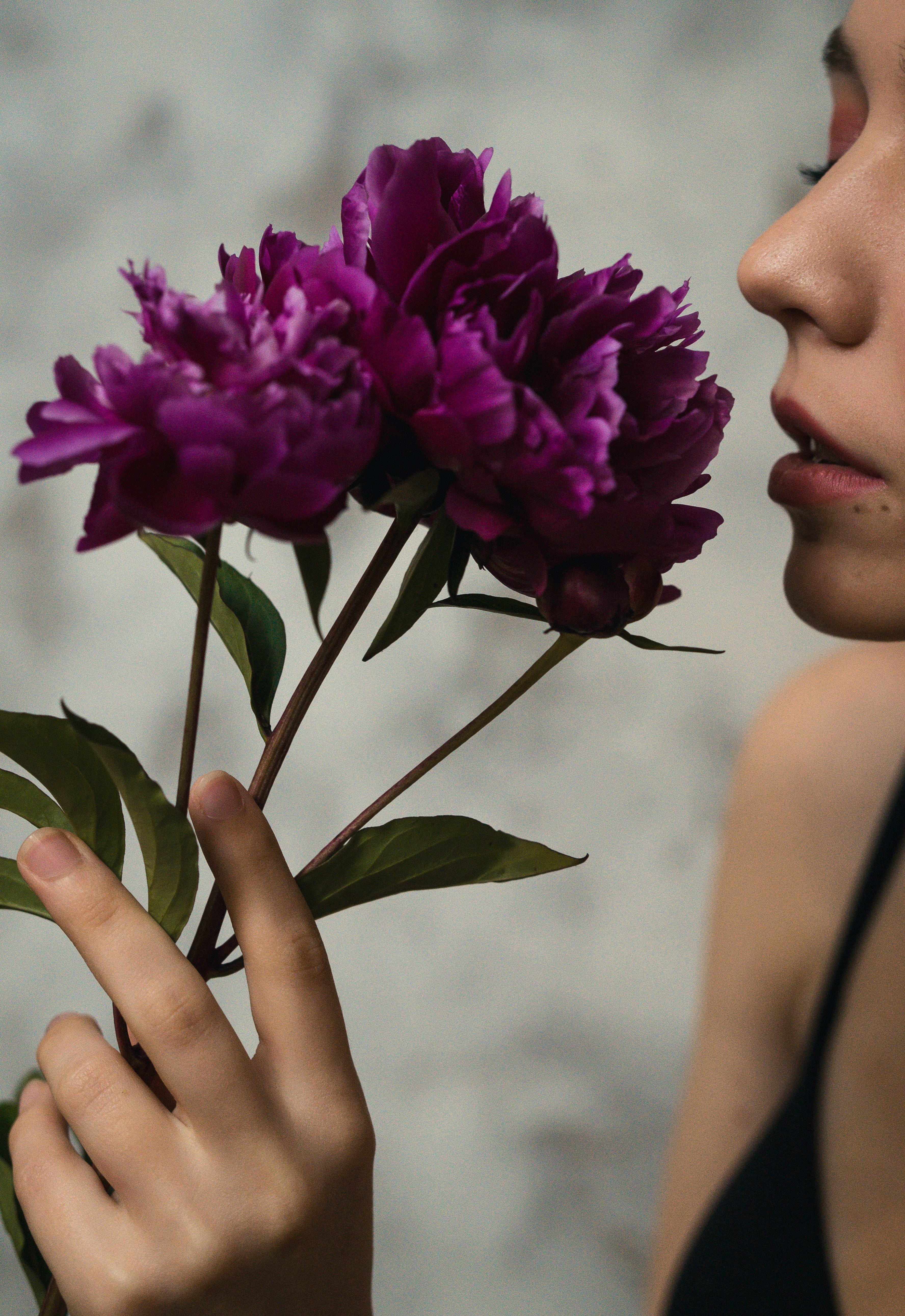The multifarious rose: the versatile chameleon of perfumery

The fact that there are so many roses, in so many regions, climates and genus means that rose perfumes are incredibly diverse in their odour profiles, meaning there there will be a rose out there to suit your taste.
A blog on rose in perfumery by Nick Gilbert
Rose is a flower that we’re all familiar with – growing up smelling them in bouquets, gardens, and obviously perfumes. They come in hundreds of varieties of colours, shapes, and sizes – but anyone who has ever sniffed a rose will tell you: most scented roses smell very different to one another. This depends entirely on the natural chemical mixture produced by the flower itself.
Roses can smell lemony and fresh, soapy and sparkly, sweet and honeyed, powdery and almond-like, rich and spicy (often a soft note of clove can be found lurking in the back of a rose bouquet) – with facets of dried tobacco and fruits of all varieties (plums, apples, peaches, strawberries, raspberries, blackcurrants… the list goes on). In terms of floralcy, roses can smell of carnation, violet, jasmine, and neroli. Roses are perfumes unto themselves.
“Stopping to smell the roses” is one of my favourite activities. Nearly every rose bush I pass I stick my nose in, breathe deep, and think about how it smells. What aspects am I noticing? Is it similar or different to other roses I’ve experienced? How would I describe this rose to a perfumer?
Extracting Roses
In perfumery, the extracts of two rose cultivars are used in the creation of fragrances – Rosa damascena, and Rosa centifolia. And both are processed in the same way, either steam distillation, resulting in the rose oil (also known as rose otto) and a rose water or hydrosol (which scientists can now recover the scented compounds from and recombine with the rose oil to give a full, delicious rose extract that reminds us more of a living rose than a typical rose oil), or solvent extraction, to produce a rose absolute.
The Romans used rose water to scent their public water fountains
emperor nero was famous for scattering rose petals during his banquets
Harvesting the rose
Typically, roses are harvested early in the morning, when their petals are most full of the prized aroma compounds. They are collected by hand – very skillfully, then by lunchtime are on their way to a distillery for extraction. The flowers are aerated, then distilled, and after some hours, precious drops of essential oil begin to form.
Rose Chemistry
Rose oil contains over 290 compounds – of which, the components mainly responsible for the odour are citronellol (lemon-petal), phenyl ethyl alcohol (petal-floral), geraniol (rose-geranium-mint), alpha (green-berry-fruity) and beta damascone (apple-honey-tobacco), eugenol and methyl eugenol (clove-spice), and rose oxide (thorns-green). Other compounds include nerol (white floral), pinene (fresh green), linalool (fresh lavender) and benzaldehyde (almond). As you can imagine, this complex chemistry of roses provides perfumers with countless ways to create roses in a perfume.
Rosa Damascena
Also known as the Damask Rose, Rosa damascena is a hybrid rose derived from the Gallic and Musk roses.
The main rose grown for perfumery, it is commercially grown in Bulgaria, Morocco and Turkey, as well as Saudi Arabia, where it is known as the Taif Rose.
Most frequently used in the fragrance industry are the Bulgarian and Turkish varieties – as with all plants, growing them in different conditions and soils results in a unique terroir, specific to the local region, which gives the extracts different scents, facets, and even uses.
Bulgarian Rose
Sweeter than its Turkish siblings, Bulgarian Rose extract is typically used by perfumers in the domain of fruity-floral fragrances and works especially well in resinous accords. It has a pronounced apple and berry character when compared to Turkish rose, as well as a softly resinous incense character, but maintains the heavenly softness of the flower itself. In olfactive character, Bulgarian roses feel closer to pink than Turkish roses do.
Turkish Rose
Considered by many perfumers to be the most versatile of the roses, Turkish Rose has a reputation for being plush, velvety and green. Roses are naturally rich in geraniol (found in abundance in geraniums), and the Turkish Rose typically has a higher geraniol content than the Bulgarian rose. This means both the oil and the absolute of Turkish Rose can be used as a fantastic canvas for the perfumer to explore, offering a great degree of flexibility for creations. If it were a colour, it would be a rich and vibrant red.
Taif Rose
Grown in the hills surrounding the city of Taif in Saudi Arabia, the Taif rose is a sub-cultivar of Damask rose: Rosa damscena tringtipetala (30 petals) but owing to the unique area and traditional distillation methods, the scent is different again. Bright, extremely powerful, and rich, Taif rose otto or attar is absolutely stunning to smell. It is also the most prized and expensive rose oil – find out more in our piece on the Taif Rose.
Rosa Centifolia
To most, this rose is synonymous with Grasse – where it is known as the Rose de Mai. Other names for the centifolia (meaning ‘hundred petals’) include May Rose or Cabbage Rose (so named because of its tightly clustered petals, not its scent!).
Rosa centifolia is highly prized, because it is grown in such small amounts, and many perfumers think of it as the finest rose. The scent, compared to Damascena, is more reminiscent of honey and tea, freshness and brightness – an ebullient rose. Rose de Mai also commands a higher price than extracts from Damask roses.
Geranium
Perfumery relies on the leaves from Pelargonium graveolens, also known as geranium, for creating rose accords. Full of green, herbal and floral aspects of the rose, geranium is used widely as a supporting act to a rose oil or absolute. Again, Geranium is grown in a number of places – especially Egypt (the extract is more green and minty) and China (more fruity and floral). Perfumers will choose their varieties for their desired effects upon a formula.
So much to choose from…
The fact that there are so many roses, in so many regions, climates and genus means that rose perfumes are incredibly diverse in their odour profiles, meaning there there will be a rose out there to suit your taste.
Read Part 1 of our blog The Mighty ROSE: the Muse of Many for a history on roses throughout history and culture
Read our blog on ROMAN ROSES – how roses were entwined in mythology and Roman culture
And finally if you want to read more about the feted Taif Rose read our BLOG The Scented Terraces of TAIF.


